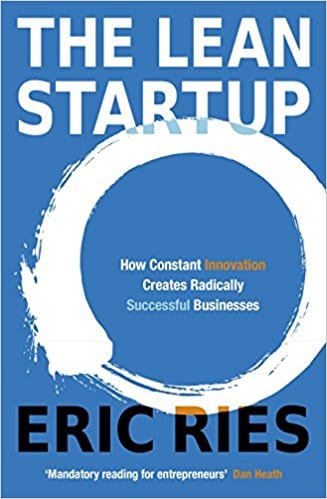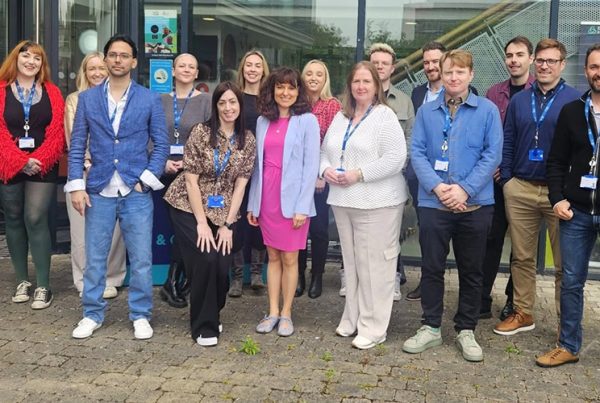
Originally published in 2011, The Lean Startup by Eric Reiss was an important moment in the history of startups. The book sets out a clear approach to developing new products and services that has established itself as the standard framework that startups now use to turn ideas into companies.
At its core, The Lean Startup: How Today’s Entrepreneurs Use Continuous Innovation to Create Radically Successful Businesses proposes that startups use a build, measure, learn framework in an iterative product development cycle that places the customer at the heart of the process. With each iteration, the lean startup method brings the company closer to achieving product-market fit by developing a product that serves a real customer need.
Get out of the building
 The customer-focused development process which was originally developed by Steve Blank is at the heart of the lean startup. The answers about which features to build and which markets to target are to be found out in the field talking to customers, not at the whiteboard. The only way an idea can be turned into a successful business is through a process of validated learning and the lean startup lays out key steps to achieve this:
The customer-focused development process which was originally developed by Steve Blank is at the heart of the lean startup. The answers about which features to build and which markets to target are to be found out in the field talking to customers, not at the whiteboard. The only way an idea can be turned into a successful business is through a process of validated learning and the lean startup lays out key steps to achieve this:
- Identify your key “leap of faith” assumptions about your product and customer
- Build a Minimum Viable Product (MVP) to test these assumptions as quickly and cheaply as possible
- Measure your customer reactions
- Learn from the data collected during the customer development process
- Change direction if your hypotheses are disproven (pivot or persevere)
- Iterate on your original idea based on the feedback
Building a Minimum Viable Product – perfection is the enemy
The goal with an MVP is to push it out rapidly with a minimum of time, development effort and expense. If your team is in a position to develop a software product in-house it is easy to become obsessed with the quality of your offering and spend too much time building features and refining the user experience.
The unfortunate fact is that quality is irrelevant if nobody wants what you are building. Rather than building out out a fully realised product and then starting to look for feedback, in the lean startup approach, the idea is to build the most basic demo possible and iterate on it early and often with customer input. If your potential customers complain about missing features this can be used to drive product development in the next iteration.
“If you are not embarrassed by the first version of your product, you’ve launched too late.”
Reid Hoffman, LinkedIn founder
IMVU – a harsh lesson in customer validation
In The Lean Startup, Eric Reiss details how his startup IMVU spent months coding a complex backend system that would allow interoperability of various instant messaging clients. Once it was ready to ship they found that no one would even download their new 3D messaging client it in the first place, so the entire development effort went to waste. They had failed to test some of the most basic assumptions about their customers before committing to a development effort. The author comes to the crushing realisation that they could have learned just as much about their customers by creating a simple sign up page where they could have gauged early interest without committing to a costly development process.
Dropbox – a highly effective MVP
As a counterpoint to IMVU’s failure to validate with customers, the author describes how the founder of Dropbox used a cleverly edited video to show how Dropbox would work in practice, long before any actual software had been developed that would allow it to work in real life. Overnight, this video allowed them to sign up over 70,000 people who wanted to use the service, proving they were meeting a real market need.
Customer development over product development
Most startups that don’t make it have usually failed due to a lack of customers rather than a lack of product development. Placing the customer at the heart of the development process, as outlined in the lean startup, is crucial for a successful outcome.
Lean Startup methodology, along with Steve Blank’s customer-focused development process and Alex Osterwalder’s Business Model Canvas, provides an excellent framework that any startup can use to test its hypotheses with the market and develop products that serve real customer needs.
About the author
 Dara Burke
Dara Burke
Dara Burke is a past participant of the New Frontiers programme in the north-west and the founder of ShowhouseVR, a virtual reality startup that enables users to visit spaces before they are built. He has combined his deep industry knowledge with a passion for technology to launch a VR startup serving the construction sector.
Dara is a qualified architect and 3D visualisation specialist and has worked as a design architect, project manager and team leader in the construction industry since 2004. Working as an architect, he specialised in large housing developments and high-end residential projects. He has over 20 years’ experience working in 3D visualisation and is an expert in VR development, real-time rendering technology and adapting game engines for commercial uses.
 Dara Burke
Dara Burke








